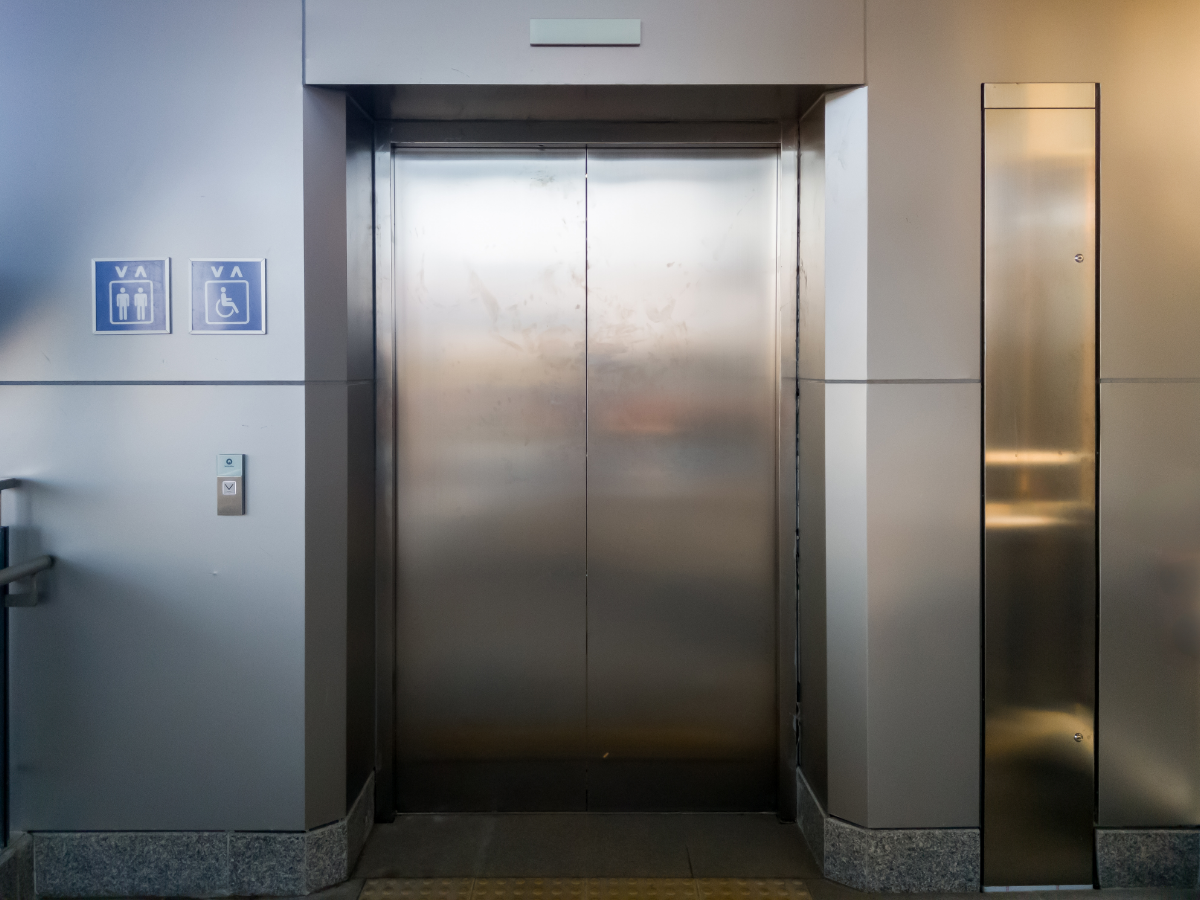Authors: Matthew Schumann, senior staff engineer, Built Environment;
Distinguished Member of Technical Staff – William Henry Merrill Society
In today’s buildings, healthcare facilities in particular, it is increasingly common to see elevator doors adorned with decorative films, wraps, or signage. These enhancements are often used for branding, aesthetics or wayfinding, but when applied to passenger elevator doors, these materials raise important questions about fire safety and code compliance.
Why it matters
Passenger elevator doors are certified for fire safety under UL Solutions product categories, including GSUX, GSUX7 and GSNVC, and tested to standards such as ANSI/UL 10B, the Standard for Fire Tests of Door Assemblies, in the U.S., and CAN/ULC-S104, the Standard for Standard Method for Fire Tests of Door Assemblies, in Canada. These certifications cover the door panel and its construction, but not aftermarket additions, including vinyl wraps or non-metallic cladding.
This distinction is critical. Adding materials to a certified fire door can compromise its fire rating unless the entire assembly, including the wrap or cladding, is retested to UL 10B. Without this testing, the door may no longer meet fire safety requirements.
Key standards to know
- UL 10B/UL 10C, the Standard for Positive Pressure Fire Tests of Door Assemblies – Required for fire door assemblies, including elevator doors
- NFPA 80 – Governs installation of fire doors and frames
- ASME A17.1 – Safety code for elevators and escalators
- UL 723, the Standard for Test for Surface Burning Characteristics of Building Materials/ ASTM E84 – Often cited for interior finishes, but not applicable to fire-rated doors
It is important to note that materials tested under UL 723, or ASTM E84 (which measure flame spread index and smoke developed index) do not meet the requirements for fire door assemblies. UL 10B testing is more stringent, requiring no unexposed flaming during the first 30 minutes.
Does this include cladding materials?
UL Solutions does certify cladding materials under category GVUZ, which includes products that can be factory- or field-installed on fire doors and frames. These materials are tested to UL 10B, and their certifications specify acceptable applications. However, even certified cladding can reduce the fire rating of the door assembly.
How to verify compliance
Authorities can verify UL Certifications through the Product iQ® database. Registration is free and provides access to detailed product listings and ratings.

